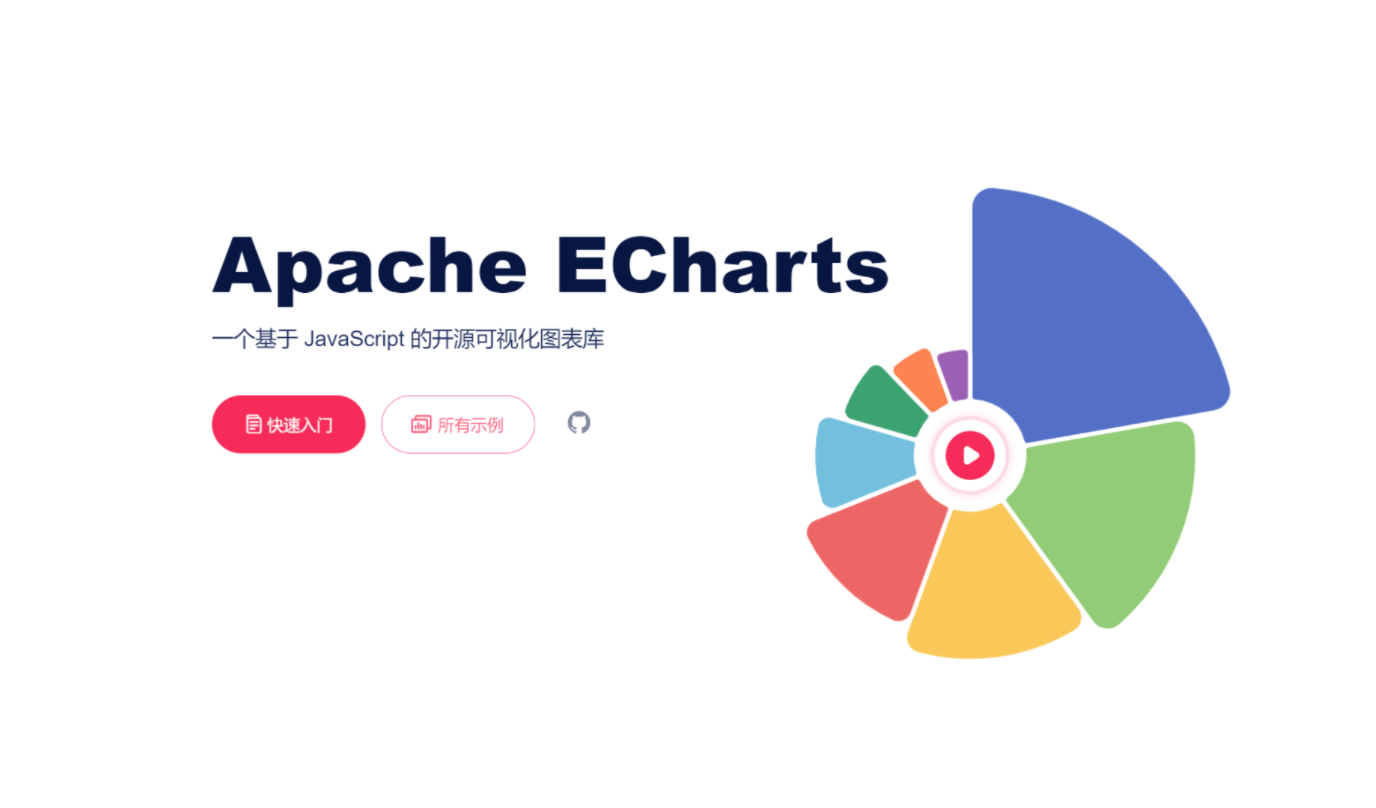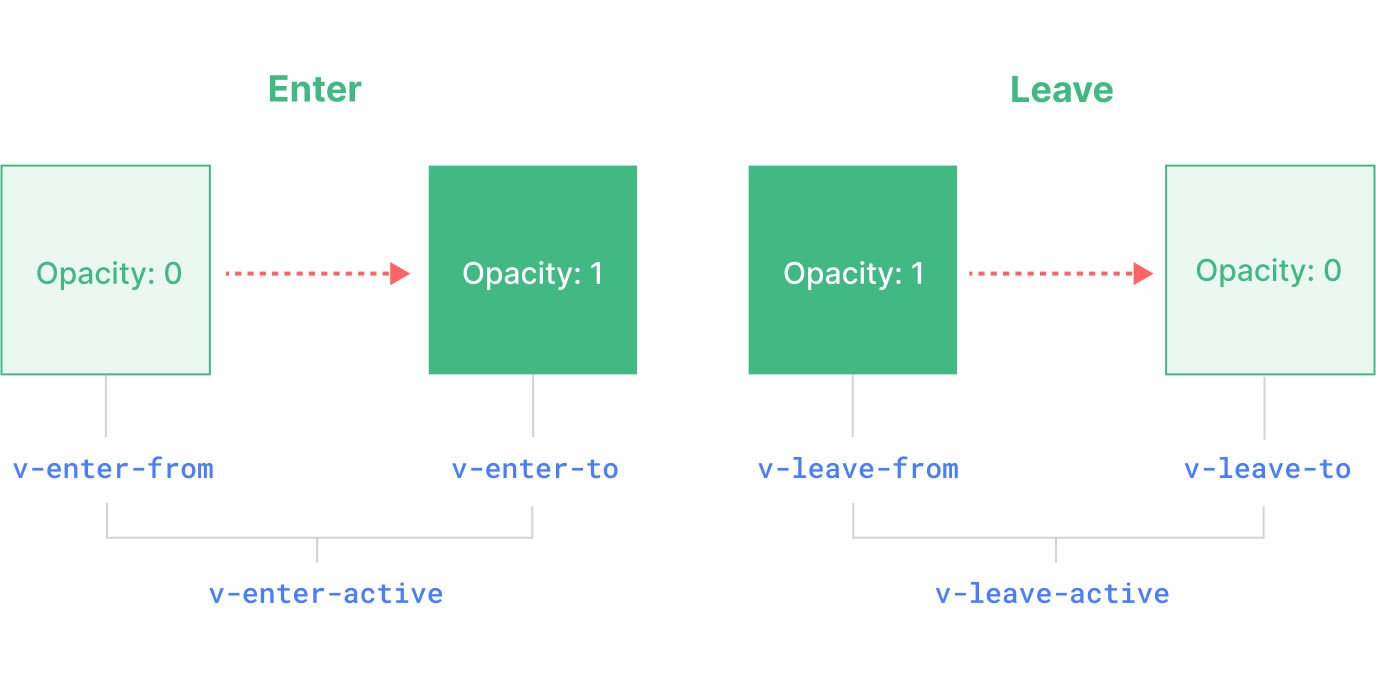Vue3知识汇总
|字数总计:5.5k|阅读时长:24分钟|阅读量:
基础知识
ref和reactive
ref可以定义基本数据类型和对象类型,用ref定义对象类型数据时,底层使用的其实就是reactive
reactive只能定义对象类型数据,reactive定义的对象不能直接赋值修改整个对象,否则会失去响应式
1
2
3
4
| const obj = reactive({ name: 'zs' })
obj.name = "ls"
obj = { name: 'ls' }
Object.assign(obj,{ name: 'ls' })
|
toRefs和toRef
作用:从响应式对象解构时,将数据转换为响应式的
toRefs:解构时,批量将对象属性全转换为ref响应式对象
toRef:解构时,将对象中指定属性转换为ref响应式对象
1
2
3
4
5
6
7
8
9
10
11
12
13
14
15
| const obj = reactive({
name: 'zs',
age: 15,
sex: 'man'
})
const { name, age } = obj
const { name,age } = toRefs(obj)
const oSex = toRef(obj, 'sex')
|
计算属性computed
1
2
3
4
5
6
7
8
9
10
11
12
13
14
15
16
17
18
| const name = "zs"
const ccucc = computed(()=>{
return name + '123'
})
const ccucc = computed({
get(){
return name + '123'
},
set(val){
name.value = val
}
})
console.log(ccucc.value)
ccucc.value = 'ls'
|
监听watch
watch能监听以下四种数据:
ref定义的数据reactive定义的数据- 函数返回一个值(
getter函数)
- 一个包含上述内容的数组
ref定义的基本数据类型
基本使用
1
2
3
4
5
6
7
| const name = ref("zs")
watch(name, (newVal,oldVal) => {
console.log('新值:' + newVal)
console.log('旧值:' + oldVal)
})
|
1
2
3
4
|
watch(name, (val) => {
console.log('新值:' + val)
})
|
停止监听
1
2
3
4
5
6
7
8
|
const stopWatch = watch(name, (newVal,oldVal) => {
console.log('新值:' + newVal)
console.log('旧值:' + oldVal)
if(newVal === 'ls'){
stopWatch()
}
})
|
ref定义的对象数据类型
1
2
3
4
5
6
7
8
9
10
11
12
13
14
15
16
17
| const obj = ref({
name: 'zs',
age: 18
})
watch(obj, (newVal,oldVal) => {
console.log('新值:' + newVal)
console.log('旧值:' + oldVal)
})
watch(obj, (newVal,oldVal) => {
console.log('新值:' + newVal)
console.log('旧值:' + oldVal)
},{
deep:true
})
|
新旧值出现相同原因
情况一:在修改某个属性时,新旧值返回一样。原因是对象地址没有变化,新值和旧值读取的都是一个值
即:obj.name由zs 变成了ls,watch监听到变化,新旧值都是从同一个内存地址的对象obj.name拿取,所以返回的一样的值
情况二:若是修改整个对象,那么新旧值读取的将是两个不同的内存地址,所以返回的值是不一样,
即:oldVal拿取的是修改前内存地址的对象,newVal拿取的是现在修改后指向的内存地址值
reactive定义的数据监听
1
2
3
4
5
6
7
8
9
10
11
| const obj = reactive({
name: 'zs',
age: 18
})
watch(obj, (newVal,oldVal) => {
console.log('新值:' + newVal)
console.log('旧值:' + oldVal)
})
|
新旧值出现相同原因同上ref
reactive默认开启的深度监听,原来版本不支持手动关闭,但是在最新版支持手动关闭?未测试
监听对象中的某个属性
- 当只监听对象中某个基础数据类型属性时,需要以
getter函数的形式完成监听某个值(即,一个返回值函数)
1
2
3
4
5
6
7
8
9
10
11
12
| const obj = reactive({
name: 'zs',
age: 18,
sp: {
type: 'XL'
}
})
watch(()=> obj.name, (newVal,oldVal) => {
console.log('新值:' + newVal)
console.log('旧值:' + oldVal)
})
|
- 当只监听对象中某个对象数据类型属性时,可以直接监听,也可写成函数返回值形式,但两者略有不同。
1
2
3
4
5
6
7
8
9
10
11
12
13
14
15
16
17
18
19
20
21
22
23
24
25
26
27
| const obj = reactive({
name: 'zs',
age: 18,
sp: {
type: 'XL',
money: 666
}
})
watch(obj.sp, (newVal,oldVal) => {
console.log('新值:' + newVal)
console.log('旧值:' + oldVal)
})
watch(() => obj.sp, (newVal,oldVal) => {
console.log('新值:' + newVal)
console.log('旧值:' + oldVal)
})
watch(() => obj.sp, (newVal,oldVal) => {
console.log('新值:' + newVal)
console.log('旧值:' + oldVal)
},{
deep:true
})
|
监听多个不同数据
基于上述情况,按需求放到数组中即可
1
2
3
4
5
6
7
8
9
10
11
12
13
14
15
| const obj = reactive({
name: 'zs',
age: 18,
sp: {
type: 'XL',
money: 666
}
})
watch([() => obj.name,() => obj.sp.type], (newVal,oldVal) => {
console.log('新值:' + newVal)
console.log('旧值:' + oldVal)
},{
deep:true
})
|
watchEffect
官方:立即运行一个函数,同时响应式的追踪其依赖,并在依赖更改时重新执行改函数
watch和watchEffect对比
- 都能监听响应式数据的变化,不同的是监听数据变化的方式不同
watch:要明确指出监听的数据watchEffect:不用明确指出监听的数据(函数中用到哪些数据,那就监听哪些数据)
1
2
3
4
5
6
7
8
9
10
| const a = ref(0)
const b = ref(55)
watchEffect(()=>{
if(a > 99){
console.log("a 大于 99 了")
}
})
|
标签ref属性
1
2
3
4
5
6
| <div ref="ccucc"></div>
<script>
// 创建一个ccucc,存储ref标记的内容
let ccucc = ref()
</script>
|
1
2
3
4
5
6
| <MyCard ref="ccucc"></MyCard>
<script>
// 配合子组件中的defineExpose API 可以拿到子组件中的数据
let ccucc = ref()
</script>
|
defineProps
接收父组件传值
1
2
3
4
5
6
7
8
9
10
11
12
13
14
15
16
17
18
19
20
21
22
23
24
25
26
27
28
29
30
31
32
33
34
35
36
37
38
39
40
41
42
43
44
45
46
|
<MyCard a='zs' :b='list'></MyCard>
const list = reactive({
name: 'zs',
age: 15
})
defineProps(['a','list'])
interface listModel {
name: string,
age: number
}
defineProps<{ list:listModel, a:string }>()
interface listModel {
name: string,
age: number
}
defineProps<{ list:listModel, a?:string }>()
import { withDefaults } from "vue"
interface listModel {
name: string,
age: number
}
withDefaults(defineProps<{ list: listModel; a?: string }>(), {
list: () => ({
name: "ls",
age: 18
}),
a: "默认值"
});
|
组件生命周期
总的概括为:创建、挂载、更新、销毁
beforeCreate(创建前)、created(创建完毕)
beforeMount(挂载前)、mounted(挂载完毕)
beforeUpdate(更新前)、update(更新完毕)
beforeDestroy(销毁前)、destroy(销毁完毕)
在setup中就已经完成创建
onBeforeMount(挂载前)、onMounted(挂载完毕)
onBeforeUpdate(更新前)、onUpdated(更新完毕)
onBeforeUnmount(销毁前)、onUnmounted(销毁完毕)
渲染阶段子组件优先于父组件
v-if 可以控制组件的销毁
自定义Hooks
本质:同一功能或相关功能和数据的抽离,组合式API的体现
优点:功能清晰易维护功能,各个hooks中都可调用生命周期钩子
常用命名:通常use[Name].[ts/js]
1
2
3
4
5
6
7
8
9
10
11
12
13
14
15
16
17
18
19
|
export default function(){
const c = 55
const sum = (a:number,b:number) =>{
return a + b + c
}
return {
sum
}
}
import useSum from './useSum'
const { sum } = useSum()
console.log(sum(3,5))
|
组件通信
props
使用频率最高,父<=>子
- 若父
=> 子:属性值是非函数
- 若父
<= 子:属性值是函数
father.vue
1
2
3
4
5
6
7
8
9
10
11
12
13
14
15
| <template>
<Child :name="name" :sendAge = "getAge"/>
</template>
<script setup lang="ts">
let name = ref('zs')
let age = ref()
// 儿子触发函数,拿到儿子的年龄
const getAge = (val:number) => {
age.value = val
}
</script>
|
child.vue
1
2
3
4
5
6
7
8
9
10
11
12
| <template>
<div>
{{ name }}
<button @click="sendAge(age)">把年龄给父亲</button>
</div>
</template>
<script setup lang="ts">
let age = ref(99)
// 声明接收props
defineProps(['name','sendAge'])
</script>
|
自定义事件
父<=子
- 自定义事件时命名官方推荐
keybab-case的事件命名,非驼峰
father.vue
1
2
3
4
5
6
7
8
9
10
11
12
13
| <template>
<Child @test-age="getAge(age)">把年龄给父亲</Child>
</template>
<script setup lang="ts">
let age = ref()
// 儿子触发函数,拿到儿子的年龄
const getAge = (val:number) => {
age.value = val
}
</script>
|
child.vue
1
2
3
4
5
6
7
8
9
10
11
12
13
14
15
16
17
18
| <template>
<div>
{{ name }}
<button @click="sendAge">把年龄给父亲</button>
</div>
</template>
<script setup lang="ts">
let age = ref(99)
// 声明事件
const emit = defineEmits(['test-age'])
const sendAge = () => {
// 触发事件
emit("test-age", age.value)
}
</script>
|
mitt
任意组件通信
src\utils\emitter.ts
1
2
3
4
| import mitt from 'mitt'
const emitter = mitt()
export default emitter
|
main.ts
1
| import emitter from '@/utils/emitter'
|
1
2
3
4
5
6
7
8
9
10
| import emitter from '@/utils/emitter'
emitter.on('test',()=>{
...
})
emitter.emit('test')
emitter.off('test')
emitter.all.clear()
|
father.vue
1
2
3
4
| <template>
<Child1 @test-age="getAge(age)">把年龄给父亲</Child1>
<Child2 @test-age="getAge(age)">把年龄给父亲</Child2>
</template>
|
child1.vue
1
2
3
4
5
6
7
8
9
10
11
12
13
14
15
16
17
18
19
| <template>
<div>
收到child2的年龄 {{ age }}
</div>
</template>
<script setup lang="ts">
import emitter from '@/utils/emitter'
let age = ref()
// emitter绑定send-age事件,只要事件触发就会接收数据
emitter.on('send-age',(val:number)=>{
age.value = val
})
// 组件卸载时解绑事件
onUnmounted(() => {
emitter.off('send-age')
})
</script>
|
child2.vue
1
2
3
4
5
6
7
8
9
10
11
12
13
14
15
16
17
| <template>
<div>
<button @click="toAge">把年龄给兄弟child1</button>
<!-- 直接触发给值 -->
<button @click="emitter.emit('send-age', age)">把年龄给兄弟child1</button>
</div>
</template>
<script setup lang="ts">
import emitter from '@/utils/emitter'
let age = ref(99)
const toAge = () =>{
// 触发,发送数据
emitter.emit('send-age', age.value)
}
</script>
|
v-model
父<=>子
father.vue
- 当
v-model用在html标签上,将实现双向绑定
下面两种写法,第一为v-model,第二为底层实现
第二种写法中:value="name"是页面到数据,@input="name = $event.target.value"是数据到页面,即前者是页面数据变则绑定的数据就变。后者实现绑定的数据变则页面的数据就变,合着完成的就是双向绑定
1
2
3
4
5
6
7
8
9
| <template>
<input type="text" v-model="name" />
<input type="text" :value="name" @input="name = (<HTMLInputElement>$event.target).value" />
</template>
<script setup lang="ts">
let name = ref('zs')
</script>
|
father.vue
1
2
3
4
5
| <template>
<Child1 v-model="name"></Child1>
<!-- 上面完整写法 -->
<Child1 :modelValue="name" @update:modelValue="$event"></Child1>
</template>
|
update:modelValue是一个事件名称,类似自定义事件,只是名称带有规范
$event:对于原生事件,$event是事件对象,有target属性。对于自定义事件,$event是触发事件时所传递的数据,无target属性
child1.vue
1
2
3
4
5
6
7
8
9
10
11
12
| <template>
<input type="text" :value="modelValue" @input="changeInput" />
</template>
<script setup lang="ts">
defineProps['modelValue']
const emit = defineEmits(['update:modelValue'])
const changeInput = (e)=>{
emit('update:modelValue',e.target.value)
}
</script>
|
生态相关
路由(vue-router)
基础使用
安装路由 npm i vue-router
创建路由 src/router/index.ts
1
2
3
4
5
6
7
8
9
10
11
12
13
14
15
16
17
18
19
20
21
22
23
24
25
26
27
28
29
| import { createRouter, createWebHistory, RouteRecordRaw } from "vue-router";
const routes: Array<RouteRecordRaw> = [
{
path: "/",
name: "HelloWorld",
component: () => import("../components/HelloWorld.vue"),
children: []
},
{
path: "/Cesium",
name: "Cesium",
component: () => import("../components/Cesium.vue")
},
{
path: "/Openlayer",
name: "Openlayer",
component: () => import("../components/Openlayer.vue")
}
];
const router = createRouter({
history: createWebHistory(),
routes
});
export default router;
|
1
2
3
4
5
6
7
8
| import { createApp } from "vue";
import router from './router'
const app = createApp(App);
app.use(router)
app.mount("#app");
|
1
2
3
4
5
6
7
| <div>
// active-class可定义当前激活的样式
<router-link to="/home" active-class='active'>首页</router-link>
<router-link :to="{ name: 'about' }" active-class='active'>关于</router-link>
<router-link :to="{ path: '/login' }" active-class='active'>登录页</router-link>
<router-view />
</div>
|
上面为路由跳转方式的一种,另外一种函数形式调用useRouter().push()
active-class可以设置激活状态下的样式
注意
路由组件:网页调用中通过路由来调取到页面中的称为路由组件。一般存放在项目中的views或者pages文件夹下。
一般组件:网页调用中通过标签引入的形式,来调取到页面中的称为一般组件。一般存放在项目中的component文件夹下。
- 通过点击导航,从页面”消失”的路由组件,默认被卸载,需要的时候再会去挂载。
路由器工作模式
history模式
优点:URL更加美观,不带有#,更接近传统的网站
缺点:服务器需要做路径处理,否则刷新会出现404
1
2
3
| const router = createRouter({
history: createWebHistory()
})
|
1
2
3
4
| # nginx 配置处理路径
location / {
try_files $uri $uri/ /index.html;
}
|
hash模式
优点:兼容性更好,因为不用服务端处理路径。
缺点:URL会带有#不美观,且在SEO优化方面相对较差。
1
2
3
| const router = createRouter({
history: createWebHashHistory()
})
|
- 后台一般采用
hash,电商等官网类一般history
路由传参
传
1
2
| <RouterLink to="/home?id=55">
<RouterLink :to="{ path:'/home', query: { id: 55 }}">
|
接
1
2
3
4
| import { useRoute } from "vue-router"
const route = useRoute()
console.log(route.query.id)
|
传
1
2
3
4
5
6
7
8
|
{
name: "home",
path: "home/:id/:name?"
}
<RouterLink to="/home/55/zs">
<RouterLink :to="{ name:'home', params: { id: 55, name: 'zs' }}">
|
接
1
2
3
4
5
| import { useRoute } from "vue-router"
const route = useRoute()
console.log(route.params.id)
console.log(route.params.name)
|
路由的props
通过配置路由props参数,结合defineProps实现路由传参
- 传递
params参数,需要地址占位
1
2
3
4
5
6
7
8
9
10
11
12
13
14
15
|
const routes: Array<RouteRecordRaw> = [
{
path: "/",
...
children: [
{
name: "home",
component: () => Home
path: "home/:id/:name?",
props: true
}
]
}
]
|
1
2
3
4
5
|
<RouterLink :to="{ name:'home', params: { id: 55, name: 'zs' }}">
defineProps(["id","name"])
|
- 传递
query参数,不需要地址占位,函数式写法返回路由中的query对象
1
2
3
4
5
6
7
8
9
10
11
12
13
14
15
16
17
18
|
const routes: Array<RouteRecordRaw> = [
{
path: "/",
...
children: [
{
name: "home",
component: () => Home
path: "home",
props(route){
return route.query
}
}
]
}
]
|
1
2
3
4
5
|
<RouterLink :to="{ name:'home', query: { id: 55, name: 'zs' }}">
defineProps(["id","name"])
|
- 传递固定参数,对象式写法
1
2
3
4
5
6
7
8
9
10
11
12
13
14
15
16
17
|
const routes: Array<RouteRecordRaw> = [
{
path: "/",
...
children: [
{
name: "home",
component: () => Home
path: "home",
props: {
id: 55
}
}
]
}
]
|
1
2
3
4
| <RouterLink :to="{ name:'home' }">
defineProps(["id"])
|
使用路由的props模式传递参数实质是,普通defineProps传递函数的逻辑,vue将自动在路由组件上加上<Home :id="id" :name="name" />,所以子组件用defineProps取值就行。
路由replace
默认路由跳转为push,相当于每跳转一下就会追加一个路由,点击返回就可回到上一次的路由
相反,replace将替换原来路由,所以其无法返回上一个路由
1
| <RouterLink replace :to="{ name:'home', query: { id: 55, name: 'zs' }}">
|
编程式路由导航
通过一个路由的钩子函数进行跳转,其中router.push中的参数写法和前面标签<router-link />中的to参数一样。
1
2
3
4
5
6
7
| import { useRouter } from "vue-router"
const router = useRouter()
router.push('/home')
router.replace('/home')
|
路由重定向
默认项目启动,会读取/路由,若没有该路由地址,控制台会提示警告。一般采取一个重定向将某个路由组件放在/路由下,再通过redirect进行重定向过去。即自动跳转到目标路径下。
1
2
3
4
5
6
7
8
9
10
11
12
13
14
15
|
const routes: Array<RouteRecordRaw> = [
{
path: "/",
redirect: "/home",
},
{
name: "home",
component: () => Home
path: "/home",
props: {
id: 55
}
}
]
|
Pinia
集中式状态(数据)管理(redux、vuex、Pinia)
基本使用
- 安装
pinia
- 创建
pinia
在src创建一个store文件夹,并新建一个index.ts文件
1
2
3
4
5
6
|
import { createPinia } from 'pinia'
const pinia = createPinia()
export default pinia
|
- 引入
pinia
main.ts
1
2
3
4
5
6
7
8
| import { createApp } from 'vue'
import App from './App.vue'
import pinia from './store'
const app = createApp(App)
app.use(pinia)
app.mount('#app')
|
- 应用
规范
- 所有
pinia相关内容放在src\store目录下,各个仓库放在src\store\modules下
- 文件命名通常与相关组件同名,如当前文件记录
home组件相关数据,那通常命名为home.ts或Home.ts
- 暴露对象时,通常采取
hooks的方式,如useHomeStore
home.ts
1
2
3
4
5
6
7
8
9
10
11
12
13
14
15
16
17
18
19
20
21
22
23
24
25
26
27
| import { defineStore } from 'pinia'
const useHomeStore = defineStore('Home', {
state: () => {
return {
name: "zs",
age: 15
}
},
getters:{
grow: state => state.sum + 1 ,
delAge(){
return this.sum - 1
}
},
actions:{
editName(name:string){
this.name = name
}
}
})
export default useHomeStore
|
home.vue
1
2
3
4
5
6
7
8
9
10
11
12
13
14
15
16
| <template>
<div>
{{ homeStore.name }}
<!-- getters计算值 -->
{{ homeStore.grow }}
</div>
</template>
<script setup lang="ts">
import { useHomeStore } from "@/store/home"
const homeStore = useHomeStore()
// 读值
console.log(homeStore.name)
</script>
<style scoped lang="scss"></style>
|
pinia数据修改
1
2
3
4
5
6
7
8
9
10
11
12
13
14
15
| import { useHomeStore } from "@/store/home"
const homeStore = useHomeStore()
homeStore.name = "ls"
homeStore.$patch({
name: 'ls',
age: 18
})
homeStore.editName("ls")
|
storeToRefs
作用:解构store中数据后,进行响应式转换
区别toRefs:只会关注store中的数据,不对方法起作用,而toRefs会将store中所有东西转换为响应式,会将所有方法进行转换。所以pinia数据响应式转换用storeToRefs
1
2
3
4
5
| import { storeToRefs } from 'pinia'
import { useHomeStore } from "@/store/home"
const homeStore = useHomeStore()
const { name, age, grow } = storeToRefs(homeStore)
|
$subscribe
作用:监听store中数据变化
1
2
3
4
5
6
7
| import { useHomeStore } from "@/store/home"
const homeStore = useHomeStore()
homeStore.$subscribe((mutate,state)=>{
console.log('homeStore中数据变化了')
})
|
组合式写法
home.ts
1
2
3
4
5
6
7
8
9
10
11
12
13
14
15
16
17
18
19
20
21
22
23
24
25
| import { defineStore } from 'pinia'
import { reactive, computed } from "vue"
const useHomeStore = defineStore('Home', {
const homeList = reactive({
name: "zs",
age: 15
})
const grow = computed(()=>{
return homeList.age + 1
})
const editName = (name:string) => {
homeList.name = name
}
return {
homeList,
grow,
editName
}
})
|
vue3开发
父子组件数据双向绑定
父组件
1
| <DataFormat v-model:modelValue="dataFormat"></DataFormat>
|
子组件
1
2
3
4
5
6
7
8
9
10
11
12
13
14
15
16
17
18
19
20
21
22
23
| <template>
<el-input v-model="inputValue" @input="handleInput"></el-input>
</template>
<script setup lang="ts">
import { ref, watch } from 'vue'
const props = defineProps<{
modelValue: string
}>()
const emit = defineEmits(['update:modelValue'])
const inputValue = ref(props.modelValue)
watch(inputValue, (newValue) => {
emit('update:modelValue', newValue)
})
const handleInput = (value: string) => {
inputValue.value = value
}
</script>
|
1
| https://blog.csdn.net/haodian666/article/details/134672770
|
问题解答
vue3中的setup 能否同vue2中的 data、methods同时存在?
可以同时存在,且setup的生命周期前于data和methods,所以在data中可以通过this访问到setup中定义的数据









